
by Victoria Silverwolf
Now that we're well into the first year of a new decade, it's possible to look back on the recently ended 1960's and acknowledge that it's been a time of extraordinary changes in society. Music, clothing, civil rights, the peace movement, and so forth. Even in the relatively tiny world of imaginative fiction, the so-called New Wave has hit the field like a tornado.
Many of these revolutions have been led by youths. Recently, many young people in the United States have been demanding the right to vote at the age of eighteen instead of twenty-one. (Shades of Wild in the Streets!)
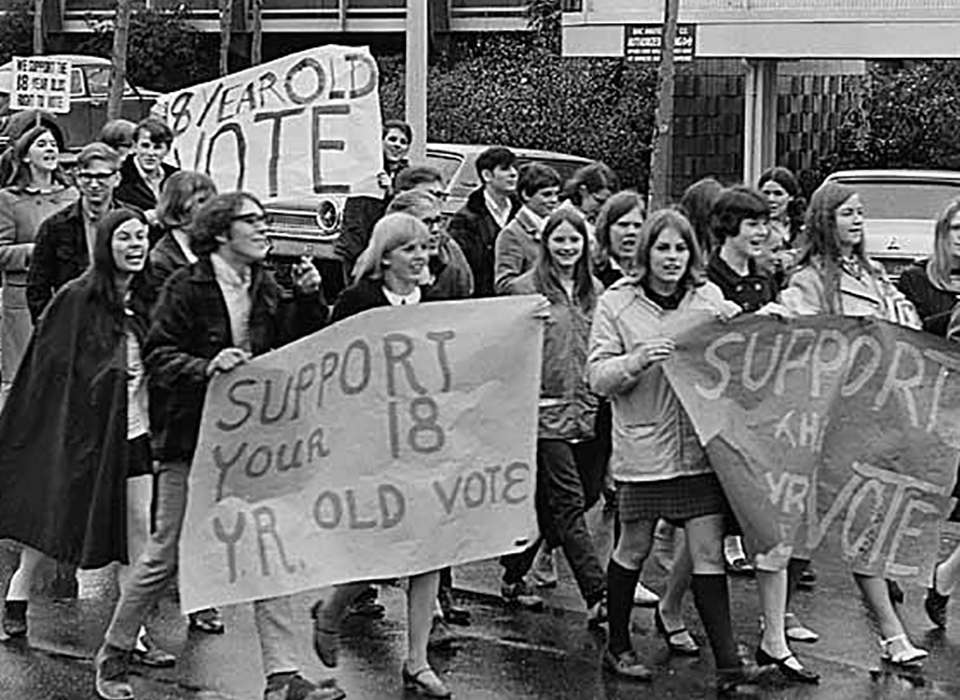
A typical demonstration promoting the lowering of the voting age. This one happened in Seattle last year.
On June 22 of this year President Nixon signed an extension of the Voting Rights Act of 1965, requiring that the voting age be eighteen in all federal, state, and local elections. However, the constitutionality of this extension is under question, so don't celebrate yet.

Nixon had doubts about the constitutionality of the extension even as he signed it, so he ordered a court case to decide the issue.
The latest issue of Fantastic reflects the changes that have been going on, with the New Wave movement influencing a great deal of fiction and nonfiction in its pages. Don't worry; there's enough Old Wave content to satisfy traditionalists as well.

Cover art by Jeff Jones. Note that the Fantastic Illustrated feature promised on the cover does not actually appear in the issue.
Editorial, by Ted White
The editor discusses the horrific murders of actress Sharon Tate and several others last year, and suggests that it might have something to do with the psychological effect of overpopulation.
No rating.
The Good Trip, by Ursula K. LeGuin
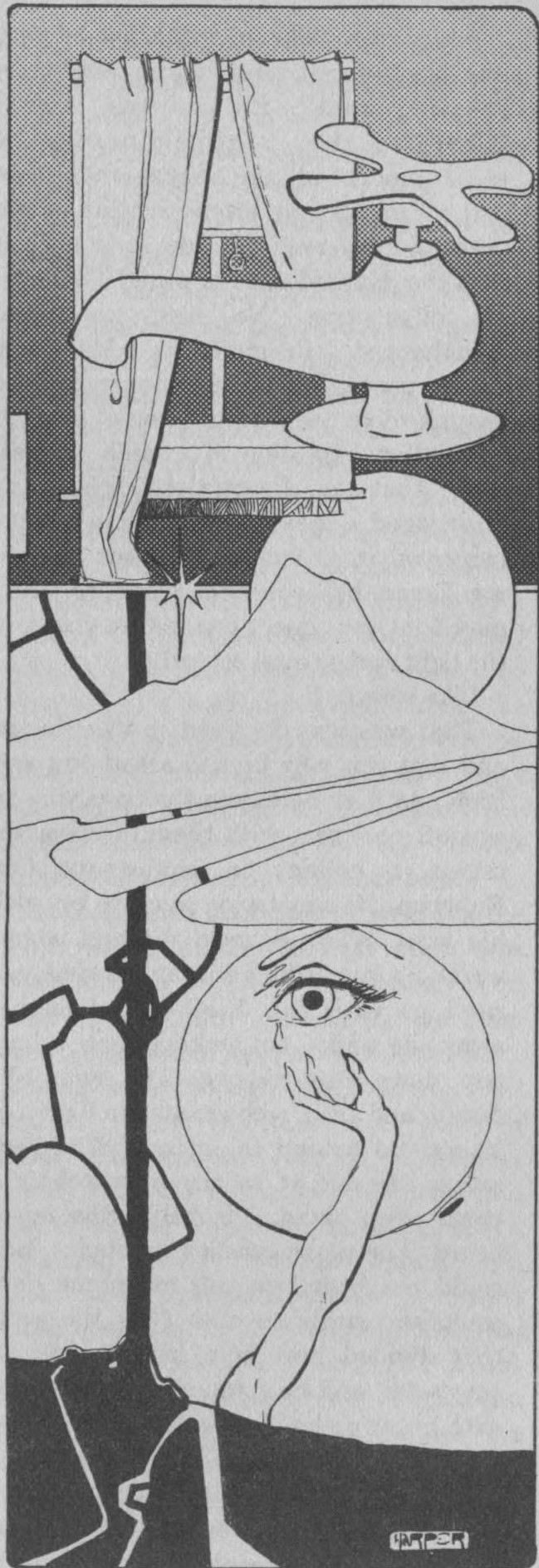
Illustration by Steve Harper.
A fellow who has lost his wife to mental illness takes a dose of LSD. He has a vision of hiking up a mountain, where she meets him. But what is real and what is imaginary?
It's clear that the New Wave influenced this story's style. There's quite a bit of wordplay and interior monologue. Playing games with reality is part of it, too. At its heart, however, this is a sentimental love story, despite its experimental narrative technique. As such, it's nicely done.
Three stars.
Music in the Air, by Ova Hamlet, as told to Richard A. Lupoff

Illustration by Michael Hinge.
The last time we met the fictional author Ova Hamlet was in the October 1969 issue of the magazine. That was a broad spoof of New Wave science fiction. This is more of the same.
Specifically, it's a parody of the Jerry Cornelius stories by Michael Moorcock and a few others that show up in places like New Worlds.
Our antihero is named Cornelius Jerry, which is hardly subtle. He hijacks a super-airplane carrying a rock band (and a naked stewardess) so he can force them to perform a concert for him.
Fans of rock music will pick up on a couple of references to fairly new bands. A flautist named Jethro Anderson is an obvious allusion to Ian Anderson, who heads the group Jethro Tull and who plays the flute. Lyrics from the King Crimson song 21st Century Schizoid Man show up. (That's a very groovy number, by the way.)
Like the real Jerry Cornelius stuff, this is much ado about nothing. A little of this tomfoolery goes a long way. I lost interest before it was over.
Two stars.
A Gift from the Gozniks, by Gordon Eklund

Illustration by Michael Wm. Kaluta.
A mysterious young woman shows up at the home of a farm family and is quickly accepted by them. She says she's here to help them when something very bad happens. However, there's an equally enigmatic enemy around who is out to destroy her.
This is a story that manages to be both intimate and apocalyptic. The introductory blurb compares it to the works of Zenna Henderson, and that's not inapt. It's a decent little bittersweet tale.
Three stars.
Say Goodbye to the Wind, by J. G. Ballard

Illustration by Judy Mitchell.
This is the latest in a series of stories set in the luxurious resort community of Vermillion Sands. The narrator supplies living clothing that changes in response to the moods of wearers to the wealthy celebrities that spend time there.
An actress in her twenties, but who has had multiple surgeries to make her look the way she did in her early teens, shows up.
She sleepwalks, dancing in the ruins of an abandoned ballroom. The narrator becomes her lover. He learns of the fate of one of her former paramours, and falls into a trap.
The tales of Vermillion Sands are not for all tastes. They rarely feature any sympathetic characters and create an overwhelming mood of fin de siècle decadence. And yet I love them.
Ballard creates striking images. This kind of thing is certainly more accessible than his more experimental works. I think I would like living in Vermillion Sands.
Four stars.
Always the Black Knight (Part Two of Two), by Lee Hoffman
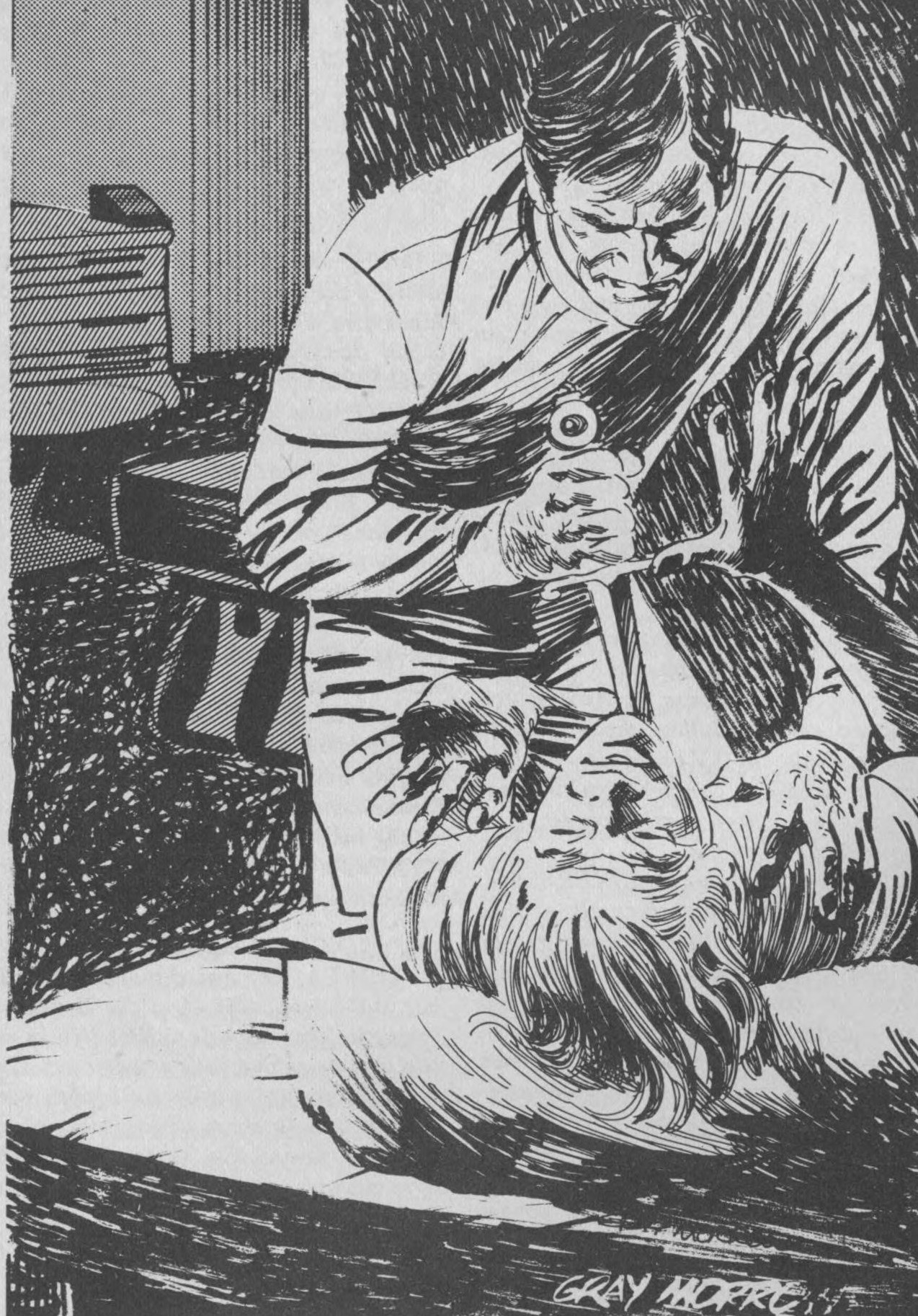
Illustrations by Gray Morrow.
Last time, our hero, a guy who made a living by playing the bad guy in jousts performed for audiences on various planets, got stranded after a serious injury, followed by his partner leaving him high and dry. He wound up working a meaningless job and living with a passive roommate.
It turns out that the folks on this planet are kept nonaggressive by drinking stuff that contains a tranquilizing drug. Television messages encourage continuing use of the liquid.
It was actually pretty easy to get the roommate to stop drinking the drugged beverage and to teach him some basic points of swordplay. The roommate went on to spread this new way of life to others.
In this half of the novel, things get out of control. The roommate becomes overly aggressive, eventually having delusions of grandeur and fancying himself ready to overthrow the government and set himself up as dictator. Can our hero calm down his former pupil while reforming society in a way that brings back passion to empty lives?
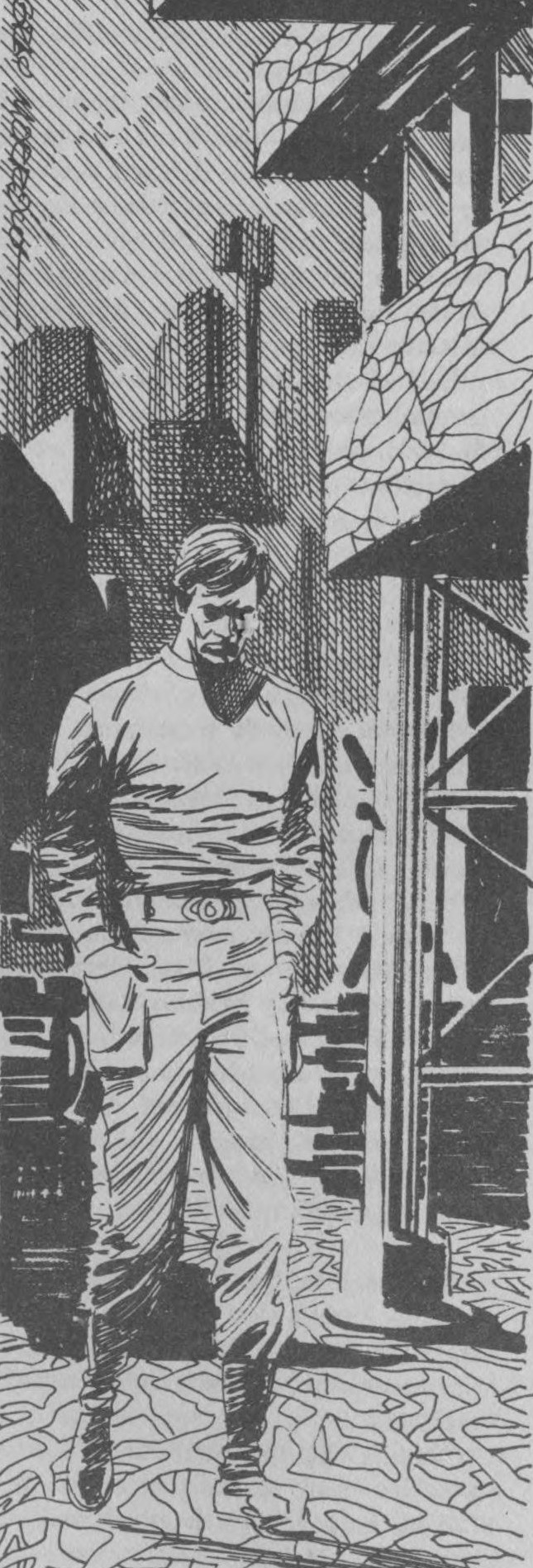
The former Black Knight in a pensive mood.
I don't really have much to say about this yarn. There's nothing wrong with it. It held my interest well enough. Still, it's not outstanding in any way. If you asked me to give an example of an average science fiction novel, I could do no better than to select this one.
Three stars.
Directions Into the Darkness, by Robert E. Toomey, Jr.

Illustration by Dan Adkins.
The narrator is a human being on an alien planet, stuck in an uncomfortable protective suit as he tries to track down an extraterrestrial worshipped as a living god.
The religion is forbidden by the alien authorities, so locating the alleged deity requires a lot of skulking around in secret. The quest leads to an extraordinary climax.
This is a enjoyable moody story. The aliens are interesting and vividly portrayed. Without giving away too much, let's just say that it makes clever use of first person narration.
Three stars.
The Elixir of Invisibility, by Henry Kuttner
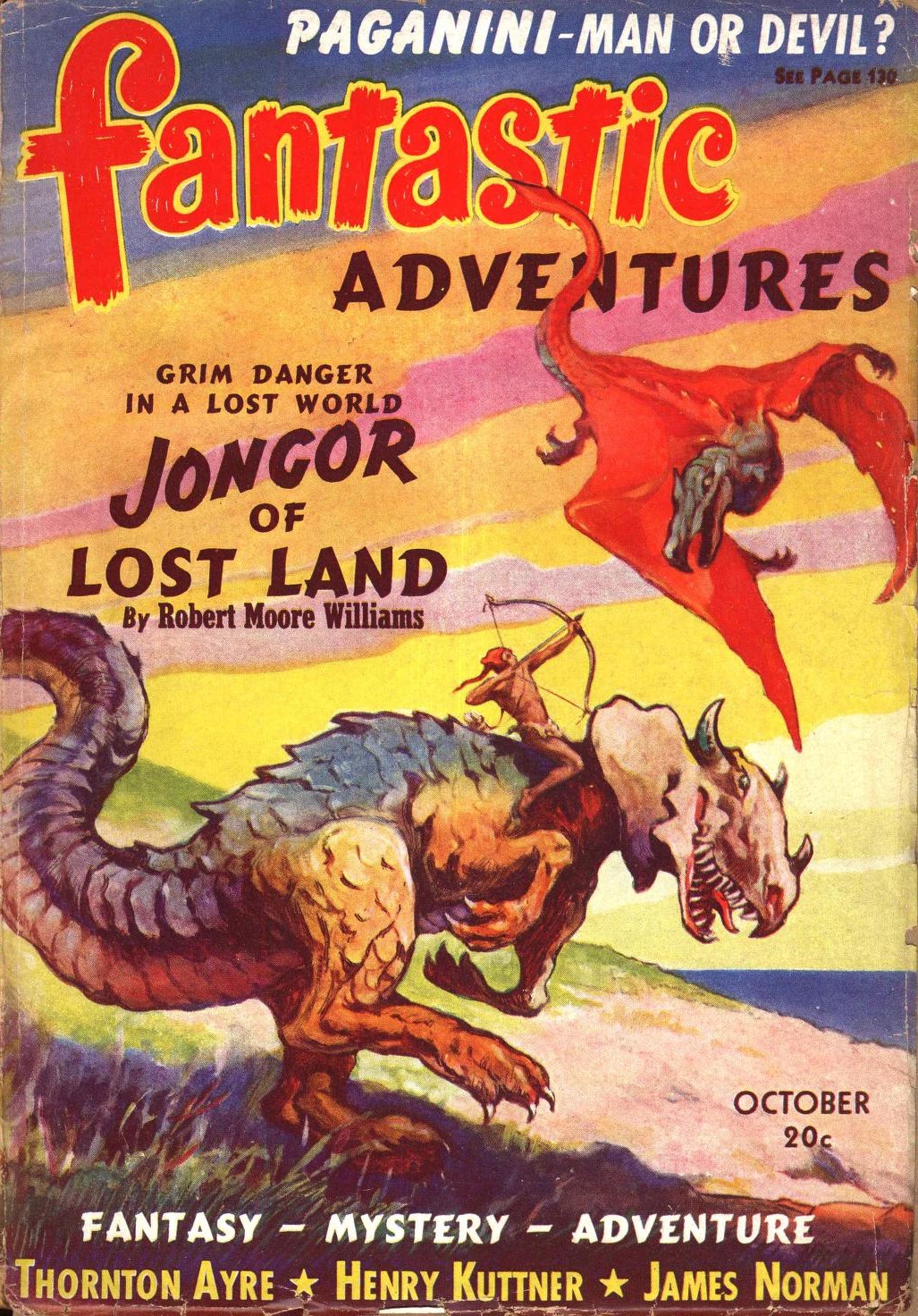
Cover art by J. Allen St. John.
The October 1940 issue of Fantastic Adventures supplies this knockabout farce.
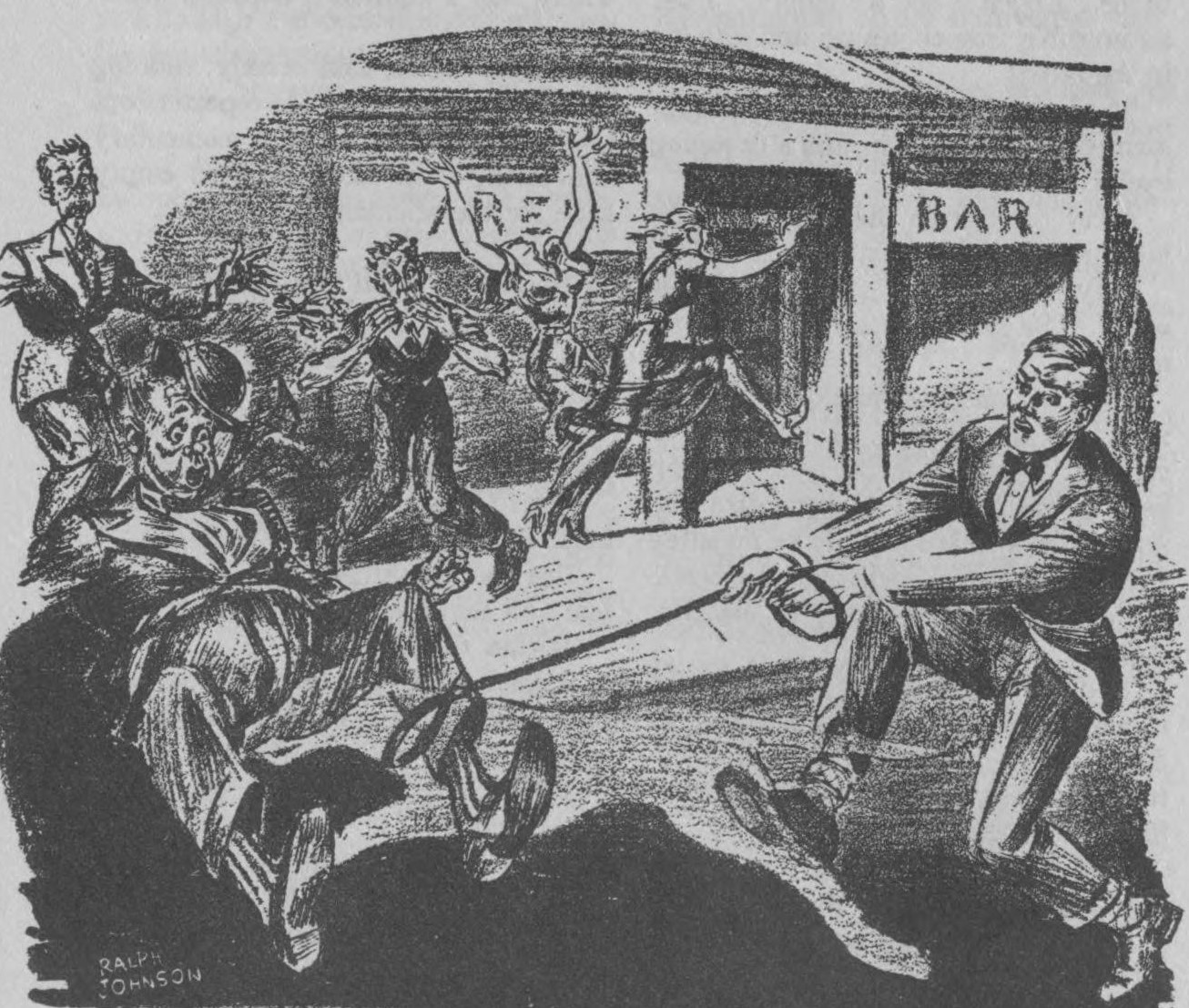
Illustration by Ralph Johnson.
The hapless main character works for a nutty scientist who has invented (you guessed it) an elixir of invisibility. He also came up with the cure for it. The assistant only puts up with the eccentric egghead because he's in love with his beautiful daughter.
Long story short, our reluctant hero winds up testing the stuff. Add in a robber who used the elixir to pull off a heist and a dog that becomes invisible as well. That's a recipe for wacky hijinks.
Old pro Kuttner knows how to keep things moving, but it's way too silly for me. I can imagine it made into a screwball comedy movie of the 1940's.
Two stars.
Treaty, by Lincoln Albert
The introduction makes it clear that there is no such person as Lincoln Albert. (Maybe he could get together with Ova Hamlet.) My sources in the publishing biz suggest that the real authors are new writer Gregory Benford and completely unknown writer David Book.
Be that as it may, the plot involves aliens who have come to Earth bearing gifts of highly advanced technology. In return, they want a place to live, their planet having become uninhabitable. Of course, there's a catch.
This is one of those stories that depends entirely on its twist ending. You may see it coming.
Two stars.
The Nature of Science Fiction, by Alexei Panshin
The latest entry in the Science Fiction in Dimension series tackles the age-old problem of defining science fiction. In a nutshell, Panshin believes in a very broad definition, with plenty of room for New Wave writing that isn't concerned with scientific accuracy or predicting the future.
Three stars.
Fantasy Fandom, by John J. Pierce
In sharp contrast, this essay suggests that, although there is room for many different kinds of imaginative fiction, New Wave stuff isn't science fiction in its proper sense. Pierce is considered to be the voice of the anti-New Wave segment of fandom.
Both authors make their opinions known in cogent and calm fashion. Take your choice.
Three stars.
. . . According to You, by Various
Lots of letters from lots of folks discussing lots of issues. Notable is a response from Norman Spinrad reacting to the editor's criticism of an article about fandom that appeared in the girlie magazine Knight. Spinrad claims his article was misrepresented. The editor answers by calling the article pernicious nonsense. I smell a feud!
No rating.
New and Improved or the Good Old Way?
All generations of speculative fiction are represented in this issue. Overall, the quality of its stories and articles was decent. Some of the three star stuff might have earned a higher rating, and the two star stuff wasn't that bad. The Ballard is the highlight, I believe, but others are likely to disagree.
Whatever generation you belong to, there's something appropriate for your enjoyment.

[New to the Journey? Read this for a brief introduction!]

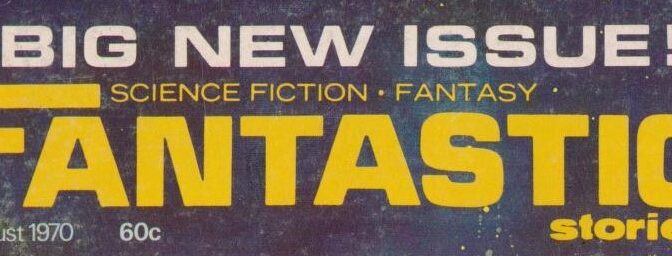


The science fiction magazines were getting socially conscious around then.
I can't say that I liked "The Good Trip," but it certainly isn't bad. Just not to my taste. Le Guin is an excellent writer, and this doesn't contradict that in any way.
"Music in the Air" was awful. As you say, a little goes a long way, and this was too much by a couple of orders of magnitude. Maybe it would help if I'd read any of the Jerry Cornelius stuff. As for "21st Century Schizoid Man," I like the first half, but then it descends into noise. As the song says, "I got no kick against modern jazz, unless you try to play it too darn fast." That's what the second half of it sounds like to me.
"Gozniks" was a fine read without being at all memorable. The comparison to Zenna Henderson is fair, though Eklund has a way to go before he's that good.
The Vermilion Sands stories are the closest I come to liking Ballard. This wasn't the best of them, but it wasn't bad.
Mark Twain hated Romantic fiction with a passion. He blamed it, and especially Sir Walter Scott, for creating the belief in the southern states that they could successfully secede from the Union. "Black Knight" seems both to agree with Twain and to attempt to defend the Romantic ideals. A readable story that no one will remember by the time next year rolls around.
The Toomey story was fine. No real disagreements there.
I'd give the Kuttner three stars. It's very much of its day, but if you account for that, it's fine.
David Book isn't entirely unknown. He co-writes the science articles in "Amazing" with Benford. "Treaty" is another one I might give a third star. Just barely. Tightening it up to be one or two pages shorter would definitely help.
Panshin and Pierce make their cases. I'm more inclined to agree with Alexei, but maybe because he presents his case more dispassionately and rigorously.
New Wave wasn't so much about creating new forms of science fiction IMO as it was about bringing already existing mainstream literary styles into science fiction. New Wavers were properly known as speculative rather than strictly science fiction writers. By the early Seventies this stuff had become part of "traditional" SF.